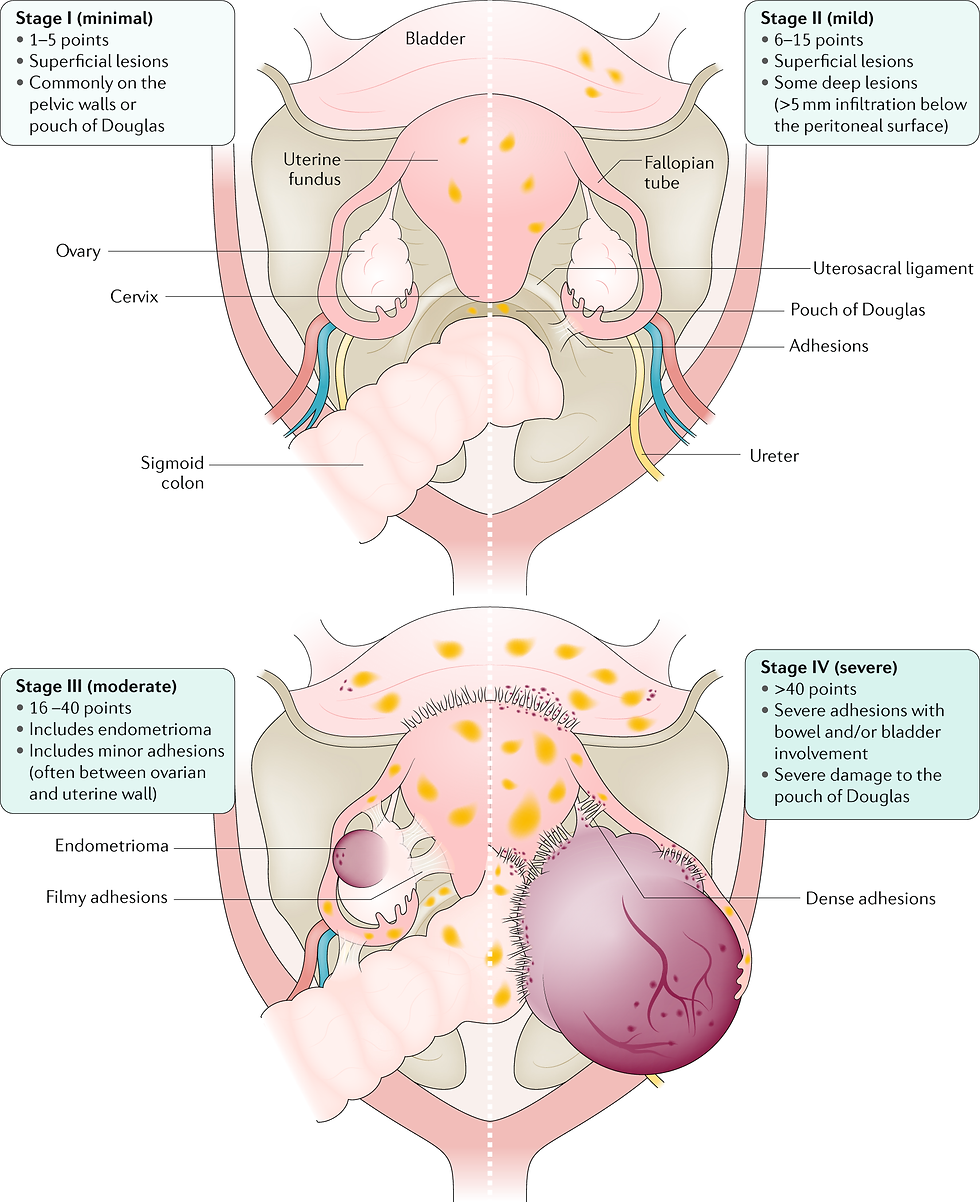#SGENDOSPECIALISTANSWERS: Not All Cyst Is Endometriosis
- Namira Mohamad

- May 30, 2022
- 3 min read
Updated: Nov 22, 2025
I remembered knowing so little about other reproductive issues except cyst & fibroid growing up. The very first experience I had when I shared my diagnosis among my circle was that of dismissal. My Endometriosis was simply brushed aside as another case of Fibroid & Cyst which ironically several of them had. I heard many stories from fellow warriors who were treated the same. The state of ignorance confuses them as it would usually come from the people they look up to for ‘womanly advice’, usually the elderly in their family. This would leave them feeling that they are ‘simply being difficult & whiny’.
To start, let’s bear in mind that Endometriosis is enigmatic, so it is wrong to think that anyone who suffers from Endometriosis is going through exactly the same symptoms, pain, adverse effects, & treatments. Also, Endometriosis must not be simplified as being the same as other reproductive conditions.
After all, there are no two bodies alike.
Wanting to clear the air once and for all, I seek clarification from the renowned Endometriosis Specialist; Doctor Ma Li, who runs the Endometriosis Clinic at NUH. With her help, I managed to list down as simple as possible the basic understanding of the primary medical conditions Endometriosis is usually linked to, what they are, their types, treatment & whether are they really Endometriosis:

The 4 Stages of Endometriosis
The American Society for Reproductive Medicine (ASRM) stages or grades Endometriosis according to the number of lesions and depth of infiltration that doctors would assign points for. Based on the results, the condition is then ranked in one of four stages: minimal (Stage I), mild (Stage II), moderate (Stage III), and severe (Stage IV).
However, the stage does not correlate with pain or infertility. Having Stage 4 does not equate to having a lower quality of life compared to other stages. Some patients are graded with Stage 2 but face paralyzing pain too.

The 4 Types of Endometriosis
Endometriosis is also categorized by what area of the pelvis or abdomen it affects. There are four types:

Superficial Peritoneal Endometriosis: This is when the Endometrial tissue (Endometriosis) is attached to the peritoneum. The peritoneum is a membrane that lines the inside of your abdomen and pelvis (parietal layer). It also covers many of your organs (visceral layer). The space in between these layers is called your peritoneal cavity. Classically pigmented in appearance, it can also appear in red, white, and with increased vascularity.
Endometriomas/Ovarian Endometriomas: These are dark, fluid-filled cysts on the ovary. They’re also called chocolate cysts. They vary in size and can appear in different parts of your pelvis or abdomen, but they’re most common in the ovaries.
Deeply Infiltrating Endometriosis (DIE): The Endometrial tissue has invaded the organs either within or outside the pelvic cavity. This can include the ovaries, rectum, bladder, and bowels. Sometimes a lot of scar tissue (also known as ‘Adhesions’) can bond organs, so they become stuck in place. This condition is called the ‘Frozen Pelvis’.
Abdominal Wall Endometriosis: In some cases, Endometrial tissue can grow on the abdominal wall. The cells may attach to a surgical incision, like one from a C-section.

It is therefore noteworthy to understand that there are several types of Cysts, Fibroids & Polyps. While Fibroids, Polyps, Adenomyosis & Endometriosis are different medical conditions altogether, Endometriosis can present in the form of an Endometriotic Cyst (also known as Endometrioma/Chocolate Cyst). However, not all cyst is endometriotic. In fact, no ovarian cyst does not mean no Endometriosis as most Endometriosis is present outside the ovaries.

I hope this clarifies.
Please share and enlighten the community so we can nurture them with the awareness as such no baseless connections are ever made again.
Be the change.
Photo credits:
Nabta Health, Pixtastock, The Golden Lady Practice, HealthJade, Nuffield Department of Women's & Reproductive Health University of Oxford & OBG Management. Thank you! ❤️
Namira Binte Mohamad Marsudi
Founder
E for Endometriosis








Comments